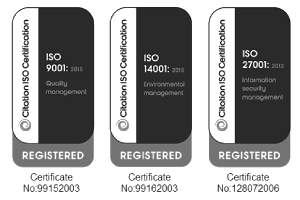Taking housing to the max
Larissa Reid, Executive Director at Brighton and Hove City Council talks us through the steps her council is taking to maximise its existing housing stock and improve housing quality.
Brighton & Hove is a popular place to live, work and visit. However, our city is a place of contrast, with areas of extreme affluence and areas of deprivation where residents can experience significant inequality compared to the rest of the city - in terms of access to suitable housing, employment, health and life expectancy. Pressures within the city include an increasing population, high property prices, a shortage of affordable homes in the city as well as limited opportunities for new development within the city’s boundaries.
Against this backdrop the Council is landlord to 11,500 tenants and manages 3,000 leasehold properties. With a can- do attitude the Council is committed to increasing the stock of social housing for those who need it and for ensuring that residents live in quality homes delivered through a balanced investment programme.
Brighton & Hove has a strong track record of improving housing supply through using assets, borrowing and collaboration to enable housing investment. Examples of our initiatives include an in-house New Homes for Neighbourhoods programme providing at least 500 new homes on council owned land and working in partnership with Hyde Housing on a living wage joint venture to deliver 1,000 lower cost homes to rent and buy. Maximising our existing assets is also key as seen through a Hidden Homes Programme which refurbishes and converts under used or unused spaces within our existing council stock into new homes. Recently the council has expanded its Home Purchase Policy to include the purchase of affordable housing units provided on new developments in the city (S106 sites) giving another route to providing affordable housing in the city.
Recent government announcements on raising the HRA borrowing gap provides the council with an opportunity to bid, with successful bids providing the chance to accelerate the council’s new build programme. Outcomes from current government consultations on use of Right to Buy Receipts and rents for social housing also have the potential to offer more options and certainty, helping us to realise our ambitions.
Equally important is ensuring that the council invests in its homes and neighbourhoods to provide safe, good quality housing, with this at the heart of the Council’s Housing Asset Management Strategy. We involved our residents in helping to shape this strategy and the service delivery priorities. Ongoing consultation with our tenants and leaseholders takes place through a large number of different forums and settings, with residents involved during procurement of key contracts, right through to the scrutiny of performance alongside us. An example where residents have directly influenced the quality of their homes can be seen when they prioritised the city wide lift replacement programme helping to cut repair costs.
The Council has a strong framework to ensure continued improvement in compliance and safety in homes. We are proud to have achieved 100% gas safe certification across homes by working closely with residents and contractors over several years. Prior to, and since the Grenfell Tower tragedy, we have undertaken a large number of actions to address fire safety, working closely with East Sussex Fire and Rescue Service. So far sprinklers have been installed in one sheltered housing block with consultations to follow on other blocks.
All investment programmes include consideration of sustainability related issues with energy use and carbon reductions a key area. Energy costs have been an ongoing area of concern for residents, and this dovetails with our commitment to reduce carbon emissions from our stock. Our progress to date includes the installation of over 300 solar PV arrays on homes with building fabric energy efficiency improvements incorporated into all capital projects e.g. re-roofing, windows and rewires. The Council are also utilising new technology to carry out an Internet of Things pilot monitoring the performance of a building, focusing on humidity and temperature sensing – before and after proposed refurbishments.
Grenfell showed us that policy and investment commitments need to be able to respond to changing circumstances and that a medium and longer term proactive strategy is required to help plan for future capital programmes.
Moving forward the Council is developing its proposals for the future delivery of responsive repairs, empty properties, planning maintenance and major capital projects from April 2020. This provides the Council with a unique chance to do things differently; building on successes we’ve had to date, increasing social value and again listening to what residents tell us they want to see.
• Brighton and Hove City Council’s Head of Housing Strategy, Martin Reid, gave a presentation on maximising housing stock at the APSE Building Maintenance and Repairs Seminar 2018 in Stoke on 4 October. The presentation is available for download from the APSE website.


.png)



.png)